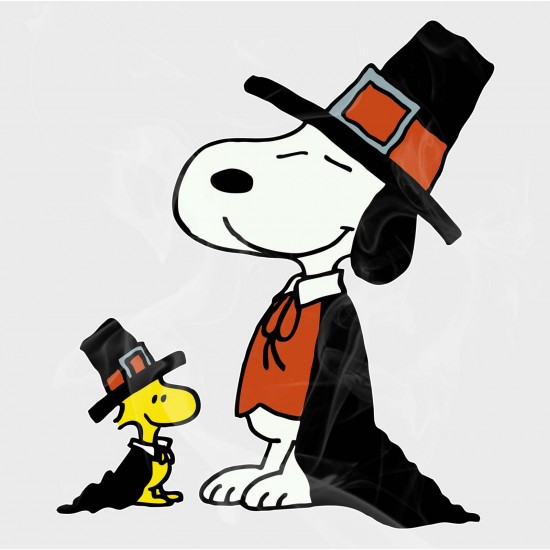
In elementary school we colored pictures of Pilgrims and Indians dressed in clothes they wore in the 17th century – or so we assumed. Pilgrims and Indians were friends – we presumed. We gathered around our family table and devoured delicious dishes the Pilgrims and Indians ate 400 years ago – or so we thought.
The backstory
The Pilgrims were a Puritan religious group, known as Separatists, persecuted for their religious beliefs. Many left England for a more tolerant country and settled in the Netherlands. About twelve years later they decided to seek a new homeland, one where their children would not be influenced by local culture – a foreign, more liberal society than the Separatists desired for their families.
The Pilgrims returned to England to plan and organize their journey, and left for the New World in July, 1620, on two ships – the Mayflower and the Speedwell. The Speedwell proved unseaworthy, and after twice returning to England for repairs, the Speedwell was abandoned.
The Mayflower sailed from Plymouth, England, on September 16, 1620, with 102 passengers and 30 crew. Half of the passengers were Separatists. The rest of the passengers wanted to start a new life in a new land.
The Mayflower’s destination was present-day New York State, the Hudson River area specifically, known at the time as Northern Virginia. Dangerous weather prevented the ship from anchoring in their chosen land, so the ship headed north and landed on the tip of Cape Cod – Provincetown today – on November 11, 1620, after 66 days at sea.
The Pilgrims explored the area and eventually settled in one of many deserted Indian villages. A few years earlier European traders arrived and left behind beads, trinkets, and illness. From a population estimated at 40,00 Wampanoag Indians, probably two-thirds perished from disease.
The Rock
Upon mooring in a bay by their new home, which they named Plimoth, the Pilgrims did not set foot on Plymouth (Plimoth) Rock.
The rock legend is a myth.
No contemporary accounts mention a rock. A 95-year-old man, Thomas Faunce, told the tale 120 years later, in 1741, recounting how the settlers stepped on the rock as they exited the ship, a tale supposedly told to Faunce by Mayflower survivors. The story was accepted at face value, and the rock became a treasured national memorial. It is very unlikely, however, that the Pilgrims guided their boat close to a large boulder.
In 1774 the rock was split and half of it moved to the town meeting house. In the 1880s the two halves were reunited, and in 1920 permanently enshrined in Plymouth Memorial State Park. The rock is about one-third its original size because during the 18th and 19th centuries tourists chopped off pieces for souvenirs, and merchants sold chunks for profit.
The First Feast
In the fall of 1621, sometime between mid-September and November, the Pilgrims celebrated their survival, their new homeland, and a generous harvest following a year of hardship with a Harvest Home feast, a traditional English festival.
The Pilgrims and local Indians were not very friendly, although the Indians taught the Pilgrims how to plant corn, beans, and squash, and how to fish and hunt. But the Pilgrims were wary of their neighbors and often looted their homes.
During the harvest celebration the Pilgrims shot off guns and cannon. The Indians came to see what all the commotion was about. Whether invited to stay or crashing the party, who knows? We do know that 52 Pilgrims and 90 Wampanoag Indians feasted.
That first New England harvest festival was not repeated for years.
The Second Thanksgiving Celebration
In 1637 a man was found murdered in his boat. The Pequot Indians were blamed, and as a result settlers rioted and massacred the Indians. Estimates are over 700 Indians died. Survivors, mainly women and children, were herded onto boats and sold as slaves in the Caribbean.
Governor William Newell of the Massachusetts Bay Colony declared a day of thanksgiving to celebrate the battle victory, and a day of remembrance every year thereafter.
The clothes and the food
As for the clothes worn by the feasters, buckles were not yet invented. The black shoes and black steeple hats often pictured are not authentic either. The Pilgrims only wore black for church meetings, so the outfits worn most days were more colorful than depicted in traditional illustrations.
The Pilgrims may have eaten wild turkey – a slimmer, tougher predecessor to today’s fat, round birds. Wild fowl – most likely geese, ducks, and venison were consumed. They enjoyed fresh seafood – lobsters, mussels, bass, clams, and oysters. A variety of vegetables were available – parsnips, carrots, turnips, spinach, cabbage, onions and beans, and herbs such as thyme, marjoram, sage, and parsley.
Missing from the table: potatoes, tomatoes, peppers, sweet corn, sugar, cranberries, apples, pears. No pies and no chocolate.
Thanksgiving Becomes a National Holiday
General George Washington declared the first national day of Thanksgiving in 1777. President George Washington proclaimed Thursday, November 26, 1789, as a day of public thanksgiving and prayer. New York adopted an annual Thanksgiving Day in 1817, and other states soon followed. President Lincoln declared the last Thursday in November as a day of Thanksgiving, and President Roosevelt specified the fourth Thursday of the month.
And today…
A small number of the Pequot Indian tribe survived. The tribe owns the Foxwoods Casino in Connecticut, advertised as the largest resort casino in North America.
More than 30 million people trace their ancestry to the 102 passengers and 30 crew aboard the Mayflower.
Americans celebrate the 3 F’s on Thanksgiving Day – Feasting, Football, and Family.


Comments
One response to “Fact, Fiction, and Myths of Thanksgiving”
Fascinating. I love history and how sad that so many Pequot people were killed because of what one person (or no one of their tribe) did. History is rife with such stories.